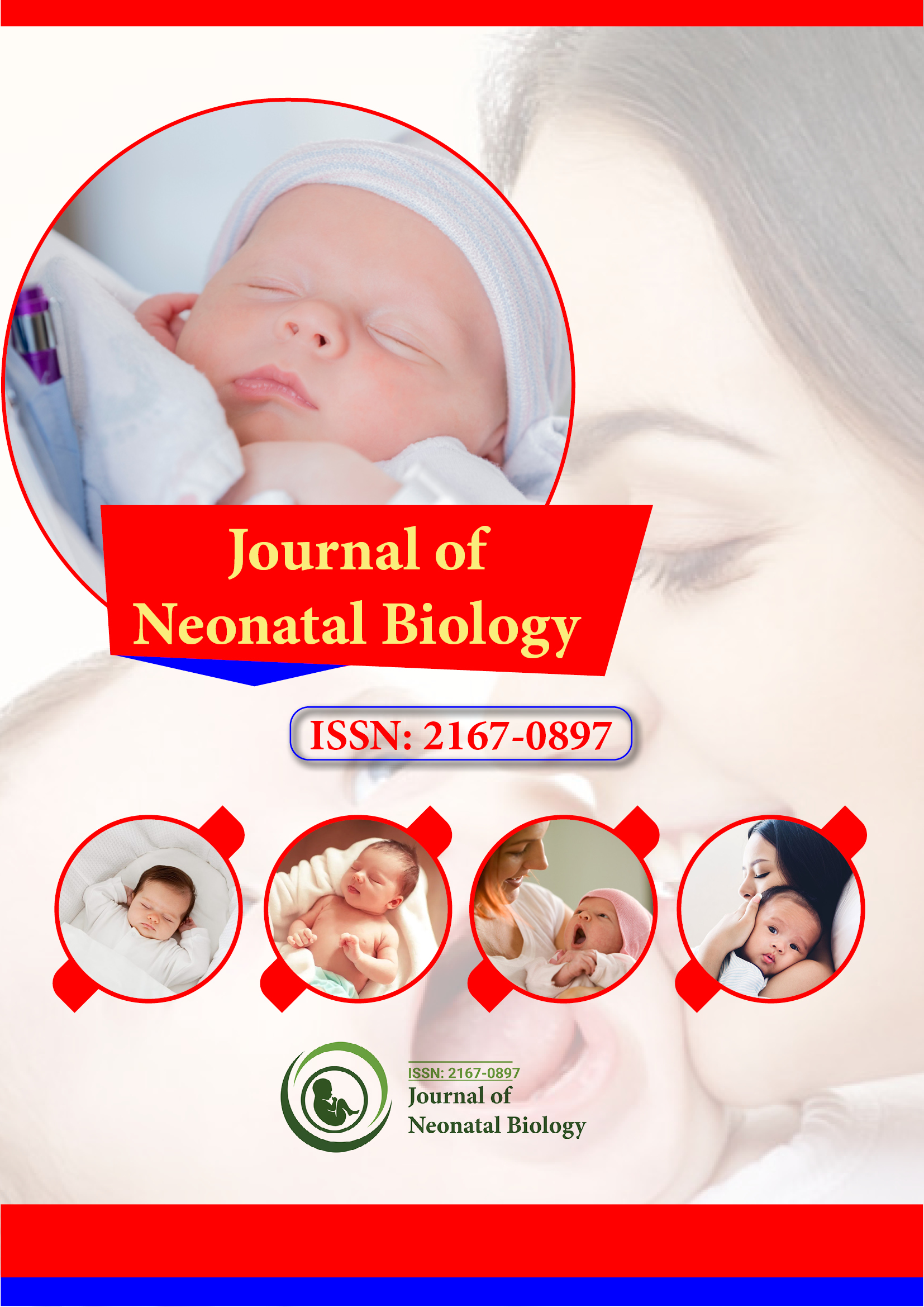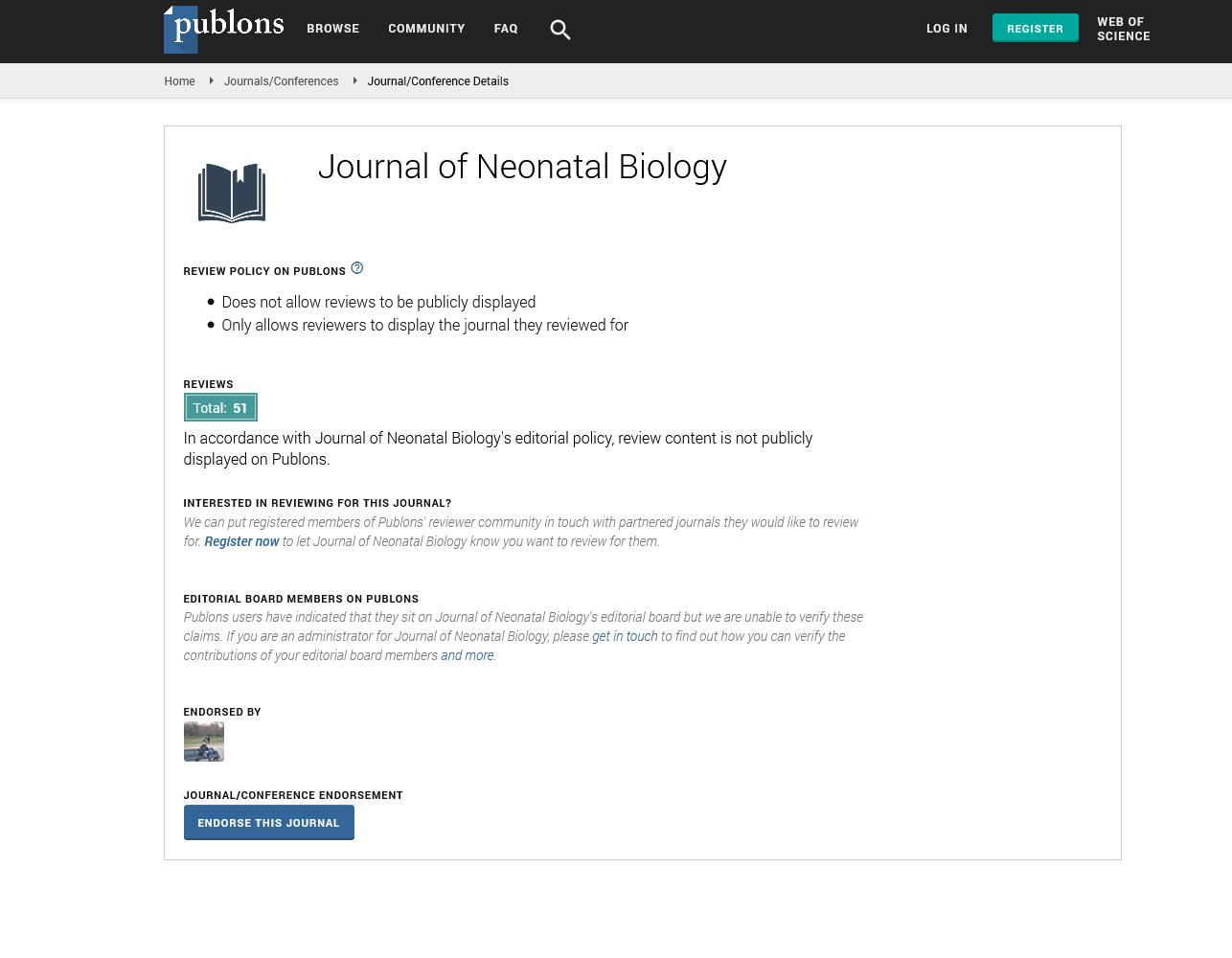PMC/PubMed Indexed Articles
Indexed In
- Genamics JournalSeek
- RefSeek
- Hamdard University
- EBSCO A-Z
- OCLC- WorldCat
- Publons
- Geneva Foundation for Medical Education and Research
- Euro Pub
- Google Scholar
Useful Links
Share This Page
Journal Flyer

Open Access Journals
- Agri and Aquaculture
- Biochemistry
- Bioinformatics & Systems Biology
- Business & Management
- Chemistry
- Clinical Sciences
- Engineering
- Food & Nutrition
- General Science
- Genetics & Molecular Biology
- Immunology & Microbiology
- Medical Sciences
- Neuroscience & Psychology
- Nursing & Health Care
- Pharmaceutical Sciences
Opinion - (2022) Volume 11, Issue 3
Maternal Anemia Effect on Newborn
Mohammed M. Jan*Received: 07-Mar-2022, Manuscript No. JNB-22-16170; Editor assigned: 10-Mar-2022, Pre QC No. JNB-22-161700 (PQ); Reviewed: 24-Mar-2022, QC No. JNB-22-16170; Revised: 28-Mar-2022, Manuscript No. JNB-22-16170 (R); Published: 11-Apr-2022, DOI: 10.35248/2167-0897.22.11.339
Description
Anemia has been a veritably important nutritive complaint in the world. India has reported high prevalence of anemia in gestation. Utmost of the papers have reported an adverse gestation outgrowth related to anemia of late, reports are arising suggesting anemia could be indeed salutary. Piecemeal from that, there was no thickness in the timing of hemoglobin considered for analysis. Hence, we designed an experimental study to look into these aspects. Iron insufficiency anemia is extremely common, particularly in the developing world, reaching a state of global epidemic. Iron insufficiency during gestation is one of the leading causes of anemia in babies and youthful children. Numerous women go through the entire gestation without attaining the minimum needed input of iron. This is to determine the impact of motherly iron insufficiency and iron insufficiency anemia on babies and youthful children. Numerous of these women are characteristic. Lack of proper weight gain during gestation is an important predictor of iron insufficiency. The provision of iron supplements to pregnant women is one of the most extensively rehearsed public health measures, yet unexpectedly little is known about the benefits of supplemental iron for the mama or her seed during fetal or postnatal life. The purpose of this composition is to examine published information on the goods of anemia and iron insufficiency on gestation outgrowth and to identify current gaps in the information. In both developed and developing countries, the maturity of women comes anemic during gestation. The World Health Organization estimates that anemia affects 35% to 75% (56% on average) of pregnant women in developing countries and 18 of women in developed countries. Still, numerous of these women are formerly anemic at generality, with an estimated frequency of anemia of 43% in non-pregnant women in developing countries and 12% in women in fat regions. The prevalence of iron insufficiency is much advanced than the prevalence of anemia, and iron insufficiency (low serum ferritin, low or no stainable bone gist iron) is present indeed in women who come pregnant with fairly acceptable iron. Stores that frequently develop late in gestation are for this reason, and because of dubieties about the utility of iron supplementation for gestation issues, there's query about the need for regular iron supplementation in pregnant women.
Fetal increase retardation is an end result of a complicated pathology as a result of more than one elements of fetal, placental, and maternal origin. Hormones and increase elements launched because of maternal‐fetal physiological interactions play significance function in fetal nicely being and fetal outcome. Intrauterine Growth Retardation (IUGR) is related to sizable perinatal and youth morbidity. It is expected that 13.7 million toddlers are born yearly with IUGR, comprising 11% of all births in growing nations. Both maternal malnutrition and anemia are related to diverse ranges of fetal increase retardation The dating among lowering delivery weight percentiles and growing fetal morbidity and mortality has been tested via way of means of numerous investigators and epidemiological research propose that IUGR is a sizable threat component for the following improvement of continual hypertension, ischemic coronary heart ailment, diabetes, and obstructive lung ailment in grownup life (Barker`s Hypothesis). Maternal anemia and/or malnutrition are diagnosed to be the maximum common reason of IUGR and SGA delivery in growing nations like India. In order to research adaptive mechanisms via way of means of the fetus to triumph over the increase downside brought on because of maternal dietary limitations, tested the quantitative versions in hormonal and increase component profiles in paired twine blood and maternal samples received from neonates born to malnourished and/or anemic moms. The outcomes of our have a look at display that the percent of Small for Gestational Age (SGA) neonates born to malnourished and anemic moms become notably better than the ones born to moms who had been both malnourished or anemic significantly better tiers of GH, PRL, HPL and IGF‐1 had been discovered with inside the twine blood of neonates born to malnourished and anemic moms indicative of an adaptive reaction on a part of the fetus to overcome an in‐utero increase downside the anoxemiaassociated fetal perturbations may also have particular functions that lead them to awesome from nutrient deficiency‐associated IUGR. Thus, those novel observations are applicable to the context of the continued medical debate on Barker's hypothesis.
This clarified that anemia is time-honored amongst pregnant girls in particular slight anemia. Early prognosis and remedy at ordinary antenatal care from first trimester has a crucial function in coping with maternal anemia and it displays immediately at the perinatal outcome. Prematurity, low delivery weight infants and postpartum hemorrhage are the most common maternal and neonatal complications.
Citation: Jan MM (2022) Maternal Anemia Effect on Newborn. J Neonatal Biol. 11:339.
Copyright: &cpoy; 2022 Jan MM. This is an open-access article distributed under the terms of the Creative Commons Attribution License, which permits unrestricted use, distribution, and reproduction in any medium, provided the original author and source are credited.

